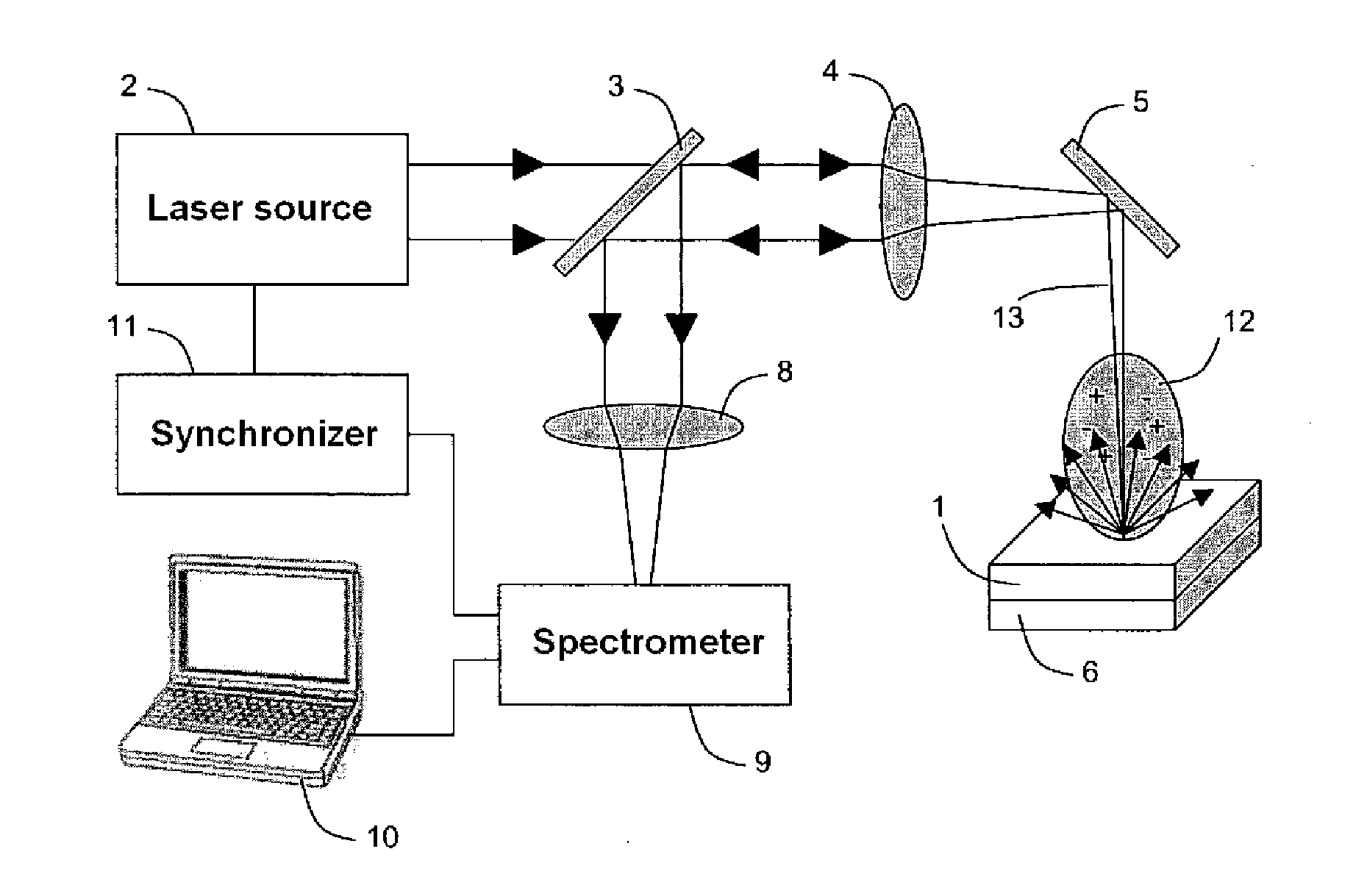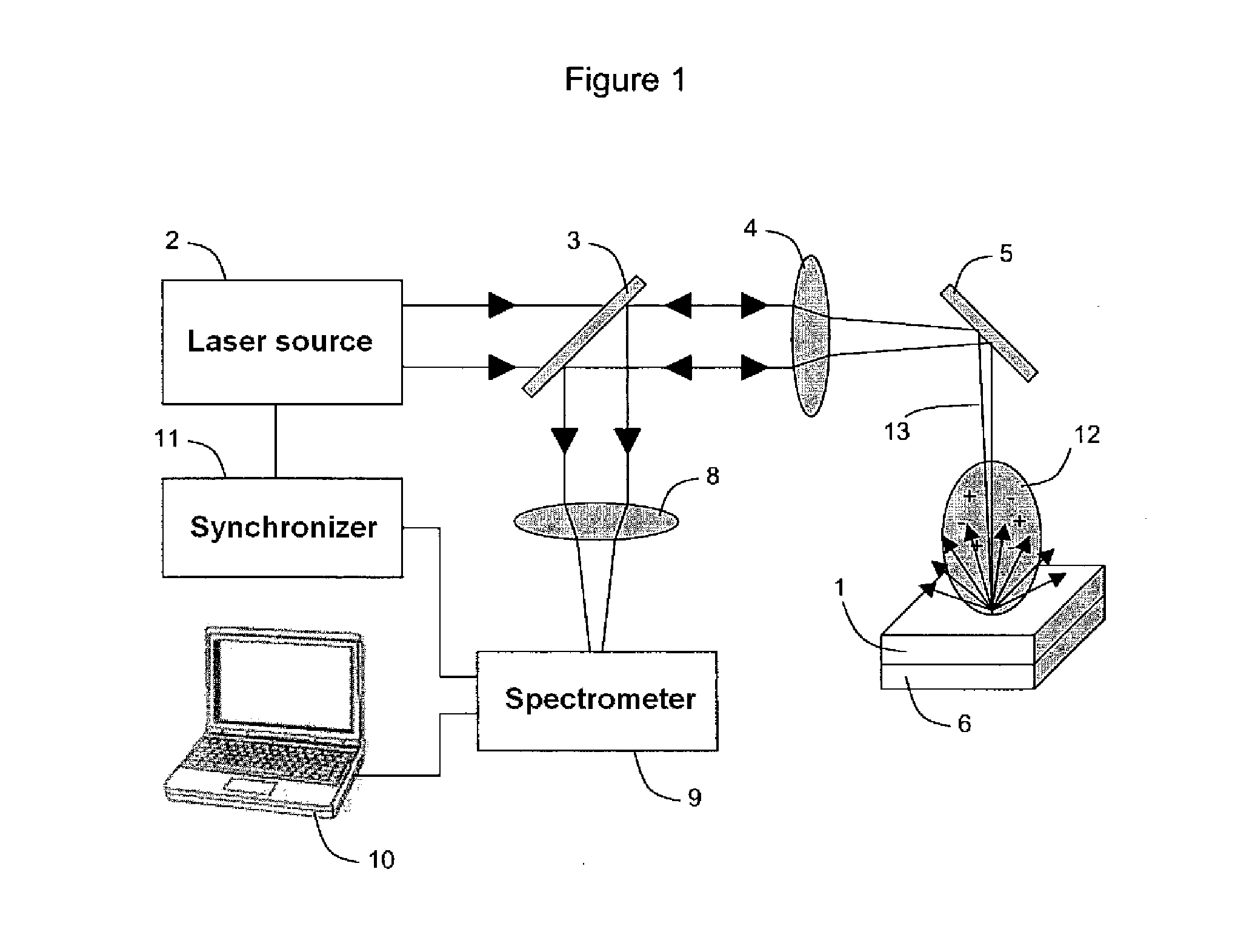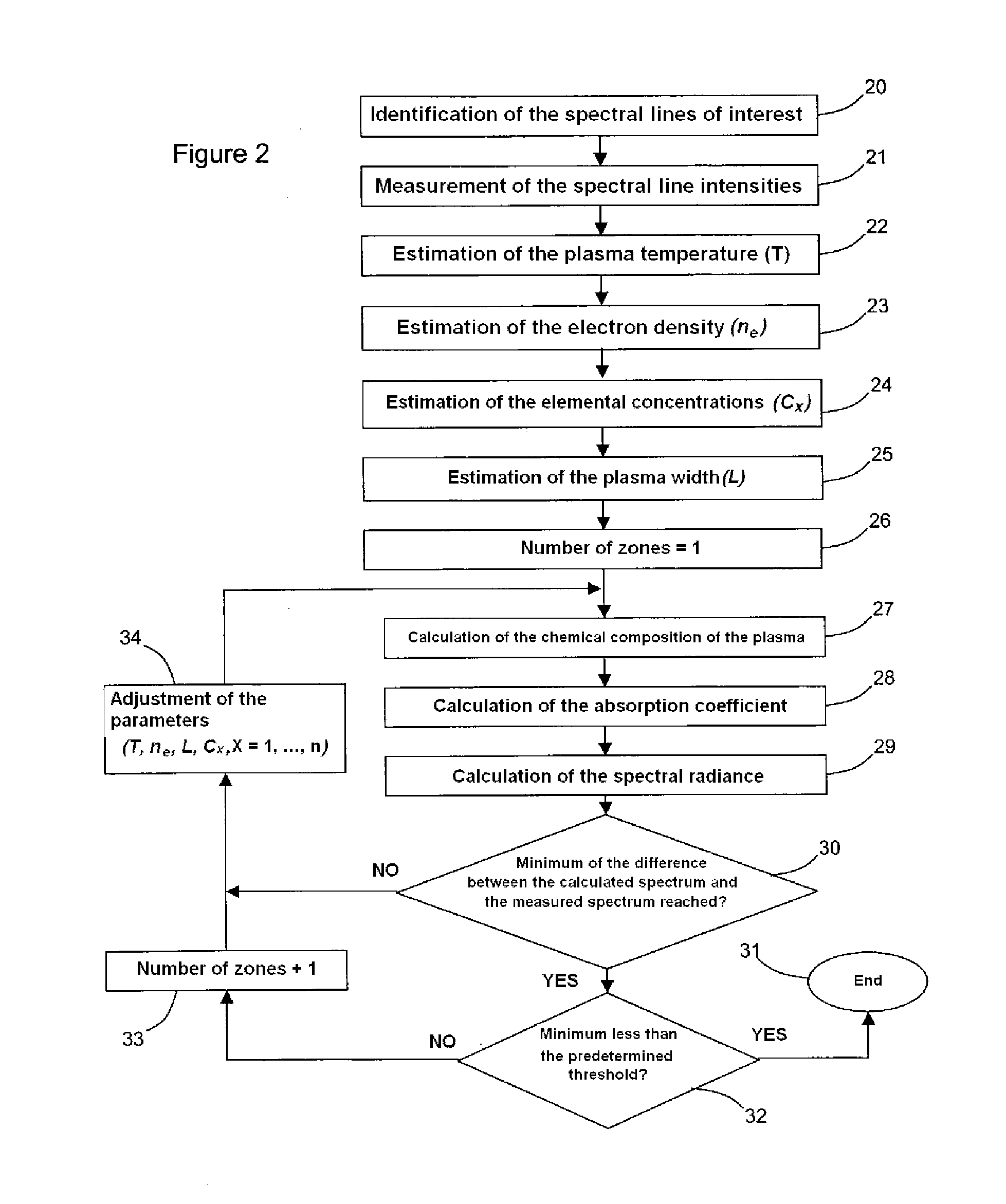System and method for quantitative analysis of the elemental composition of a material by laser-induced breakdown spectroscopy (LIBS)
a technology of elemental composition and laser-induced breakdown, which is applied in chemical methods analysis, instruments, spectrum investigation, etc., can solve the problems of cumbersome experimental constraints, sometimes even impossible to alleviate constraints, and impossible to reproduce, etc., and achieves the effect of obtaining the plasma chemical composition very quickly, short calculation times, and rapid calculation of spectral radian
- Summary
- Abstract
- Description
- Claims
- Application Information
AI Technical Summary
Benefits of technology
Problems solved by technology
Method used
Image
Examples
Embodiment Construction
[0055]In reference to FIG. 1, a system for quantitative analysis of the elemental composition of a material according to the invention, also comprising a laser radiation source 2, optical separation means 3, optical means 4 and 5, a stand 6, an optical system 8, a calibrated spectroscopic analysis system 9, a computing device 10 and a synchronizer 11.
[0056]Source 2 emits a pulsed laser radiation that crosses beamsplitter 3 before being focused on the surface of sample 1 (or in the gas) via a lens 4 and a mirror 5 properly oriented. The laser radiation heats the material on the surface of sample 1, which generates plasma 12 and induces the emission of radiation 13. A part of radiation 13 emitted by the plasma is collected by means of optical means 4 and 5, and then is reflected by beamsplitter 3 and finally collected by optical system 8 toward spectrometer 9.
[0057]Note that the use of a stand 6—or sample holder—is only necessary in the case of a liquid or solid material. In the case ...
PUM
 Login to View More
Login to View More Abstract
Description
Claims
Application Information
 Login to View More
Login to View More - R&D
- Intellectual Property
- Life Sciences
- Materials
- Tech Scout
- Unparalleled Data Quality
- Higher Quality Content
- 60% Fewer Hallucinations
Browse by: Latest US Patents, China's latest patents, Technical Efficacy Thesaurus, Application Domain, Technology Topic, Popular Technical Reports.
© 2025 PatSnap. All rights reserved.Legal|Privacy policy|Modern Slavery Act Transparency Statement|Sitemap|About US| Contact US: help@patsnap.com



